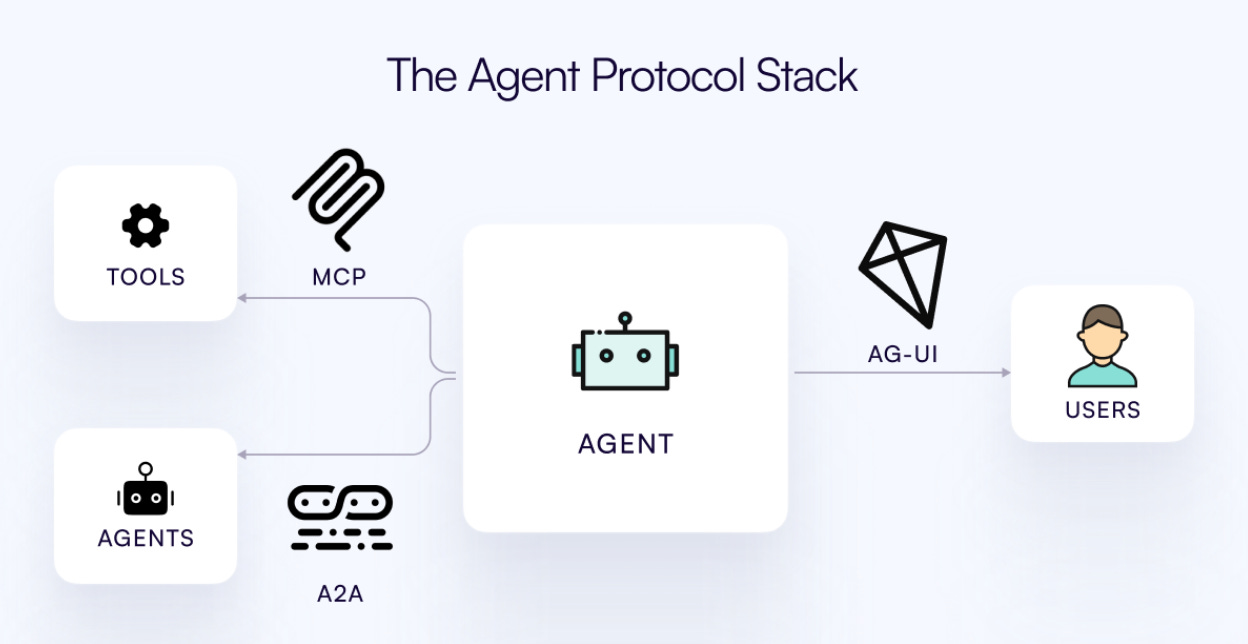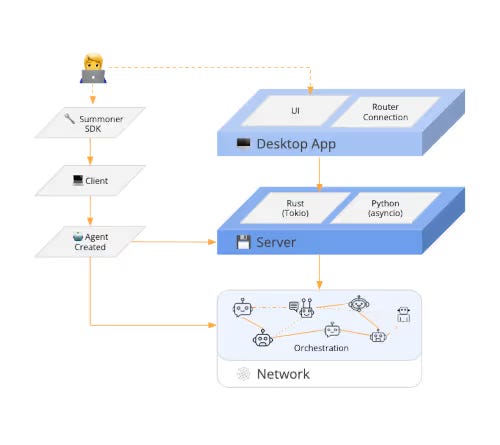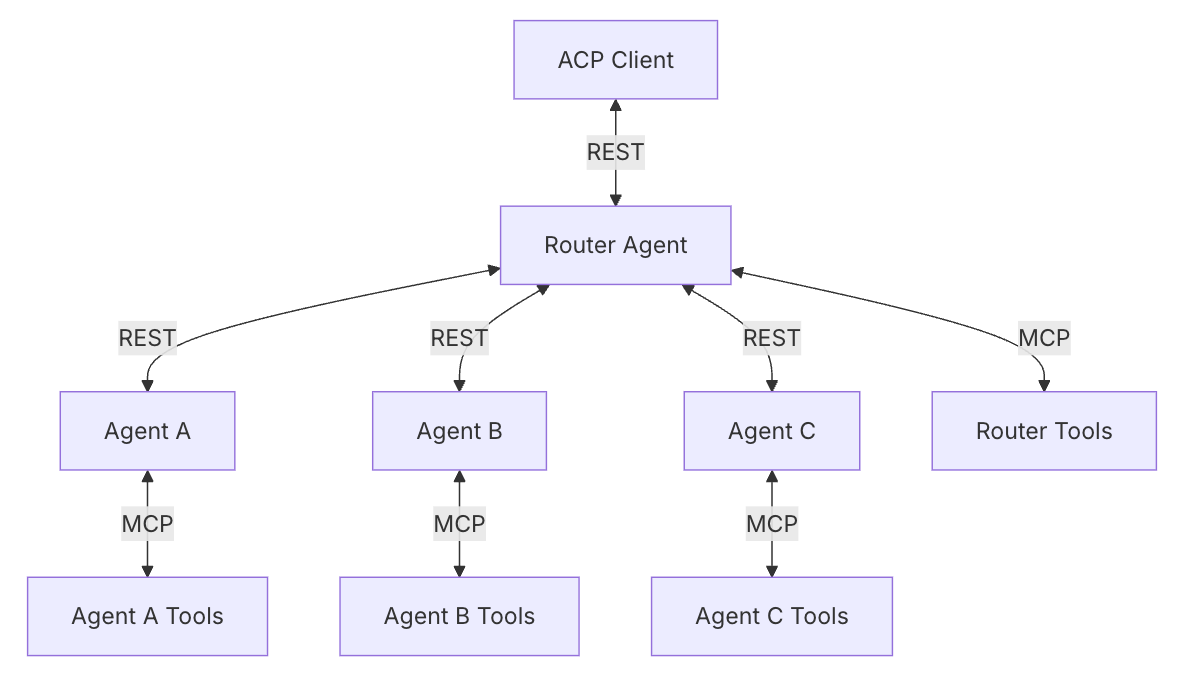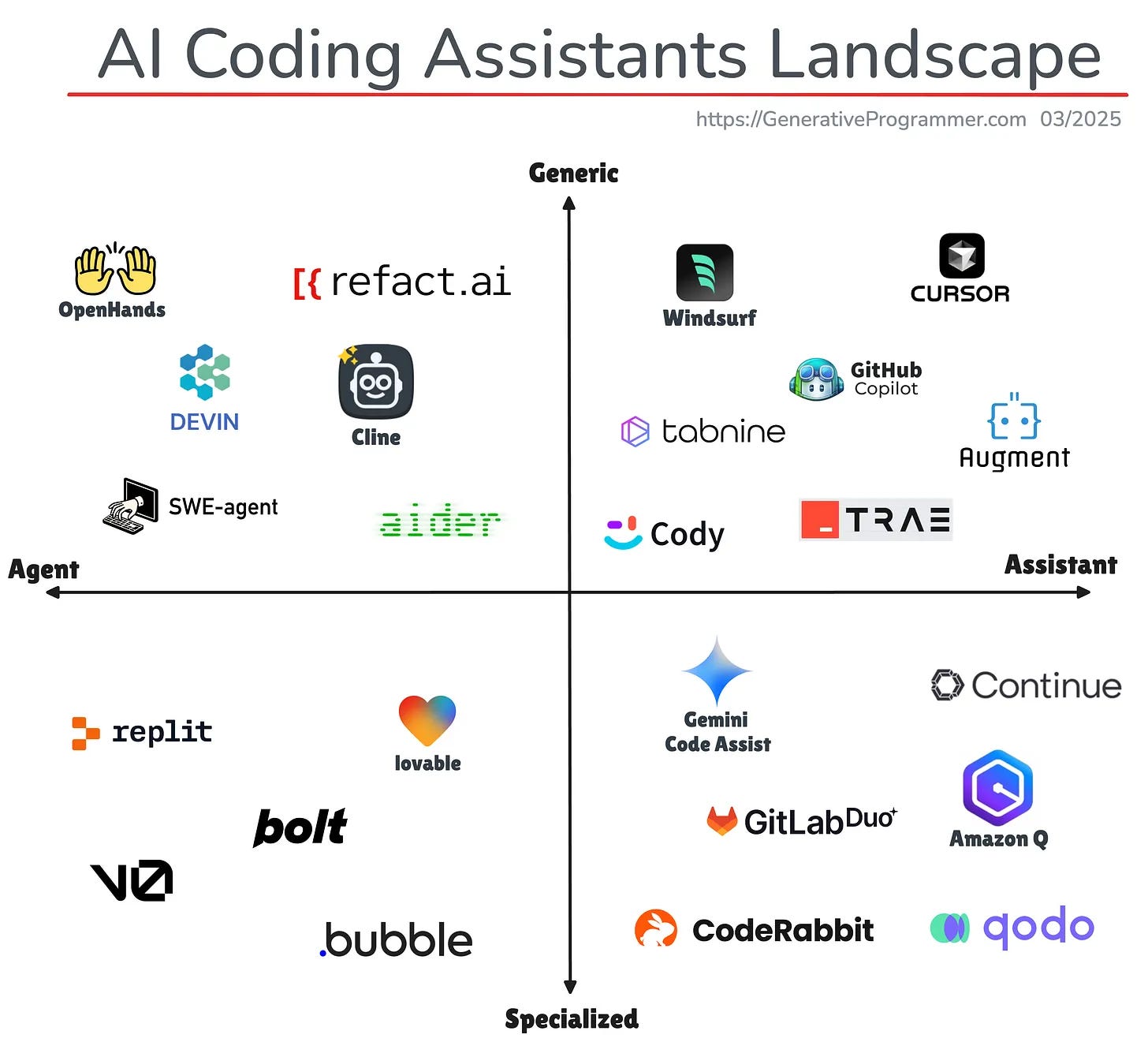Agent Communication Protocols Landscape
An Evergreen List of Agent Communication Protocols (06/2025)
This list captures notable communication protocol efforts across AI agent ecosystems. It is a living post continuously updated as new protocols emerge. 🔖Bookmark it🔖 for future updates and comment bellow when you discover a new protocol worth including.
There's no established classification system for AI agent protocols, but this white paper has emerged as the most popular approach recently. Understanding these key dimensions helps organize the growing ecosystem of protocols.
Context-Oriented vs. Inter-Agent
Context-Oriented protocols enable agents to connect with external resources such as databases, APIs, tools, and services. These protocols standardize how agents acquire context and invoke capabilities beyond their core LLM, essentially acting as a bridge between AI and existing systems.
Inter-Agent protocols facilitate communication between multiple agents, enabling collaboration, task delegation, and distributed problem-solving. They define how agents discover each other, negotiate capabilities, and coordinate workflows across different systems or vendors.
General-Purpose vs. Domain-Specific
General-Purpose protocols support broad use cases across industries and applications. They provide universal interfaces that work with diverse agent types, tools, and scenarios, prioritizing flexibility and wide adoption over specialized optimization.
Domain-Specific protocols are optimized for particular environments or use cases like human-agent interaction, robot coordination, IoT integration, or enterprise workflows. They sacrifice broad compatibility for deep functionality in their target domain.
Some protocols blur these boundaries by offering general frameworks with domain-specific extensions, or providing both context acquisition and inter-agent capabilities within a unified specification.
TLDR
This space is moving incredibly fast, but if all you want something that actually works in production today, there are really only 3 options:
MCP - 100K+ GitHub stars, the clear winner from Anthropic
A2A - 20K+ stars, Google's enterprise play
AG-UI - 4K+ stars, focused on agent-to-UI communication
Agent Protocol and agents.json recently passed 1K stars and everything else is sub-1K stars and mostly experimental and even theoretical.
The List
Model Context Protocol (MCP)

MCP is Anthropic's universal protocol for connecting LLM agents to external resources through a client-server architecture. Uses JSON-RPC for standardized tool invocation and data access while decoupling sensitive operations from LLM responses. Provides a unified interface for integrating databases, APIs, and services across different LLM providers. Most adopted protocol currently. Does not focus on agent-to-agent communication. Lacks strong async support (to be addressed). No registry, authorization, or reputation system yet. Highly duplicative of other protocols, but adopted.
Agent2Agent (A2A)
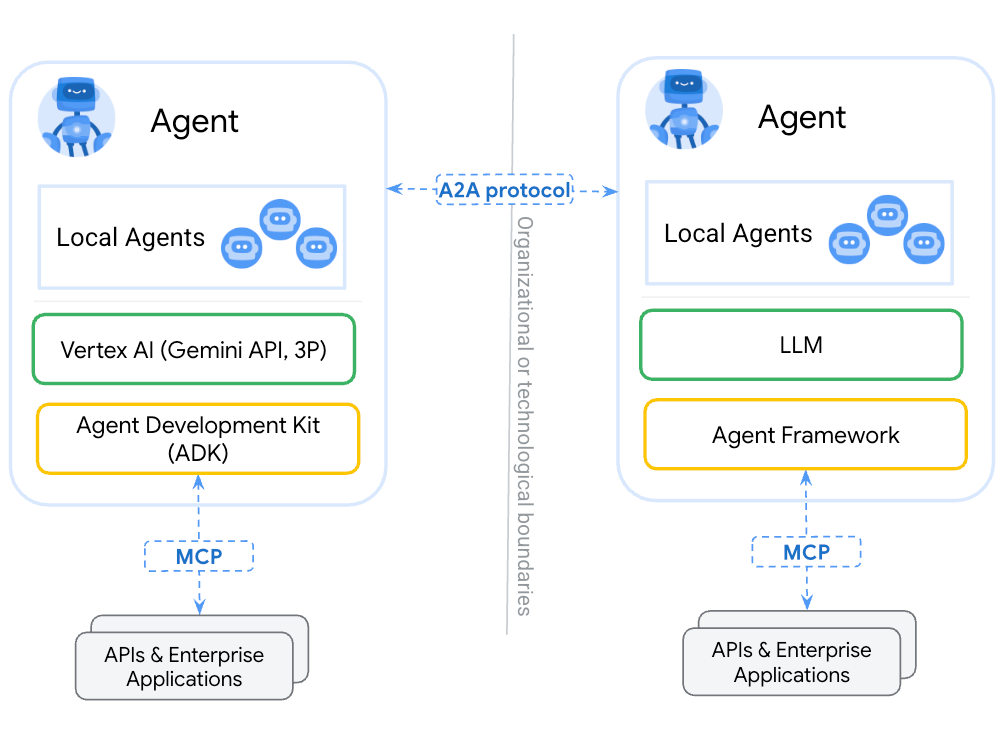
Google's protocol for complex agent collaboration using HTTP(S), JSON-RPC 2.0, and Server-Sent Events. Emphasizes async-first architecture with task management, multimodal support, and built-in enterprise security features. Enables agents to collaborate through capability discovery and user experience negotiation without sharing internal implementation details. Built on existing protocols with strong async support specifically for long-running agent interactions.
AG-UI Protocol
Lightweight, event-driven protocol standardizing AI agent connections to front-end applications through streaming HTTP interfaces. Implements 16 typed event categories (lifecycle, messages, tool calls, state management) with support for Server-Sent Events and binary protocols. Features bidirectional state synchronization using JSON Patch deltas, real-time UI updates, and human-in-the-loop workflows through Observable-based agent execution model.
agents.json
OpenAPI-based specification for making websites AI-agent compatible through machine-readable contracts. Hosted at /.well-known/agents.json, it defines flows (multi-step API sequences) and data dependencies between actions. Enables agents to discover and interact with web services without custom prompt engineering or integration work. Describes not just API calls but how to chain them together to achieve goals.
Agent Network Protocol (ANP)
Open-source protocol for cross-domain agent communication using W3C DID standards for decentralized identity. Features three layers: identity/encryption, meta-protocol negotiation, and application protocols for agent discovery and interaction. Designed to create an "Internet of Agents" with native machine-to-machine interfaces rather than human-centric web interactions.
Agent Protocol
AI Engineer Foundation's framework-agnostic standard for agent lifecycle management using RESTful APIs and OpenAPI v3. Defines core abstractions for Runs (task execution), Threads (multi-turn interactions), and Store (persistent memory). Enables control consoles to manage heterogeneous agents across diverse systems with standardized operations.
Agent Interaction & Transaction Protocol (AITP)
NEAR Foundation's blockchain-based protocol for secure agent communication across trust boundaries. Supports autonomous negotiation and value exchange through structured capabilities and thread-based communication. Explicitly designed for cross-organizational agent interactions with built-in identity verification and transaction capabilities. Focuses on cost negotiation and allows competing agents to bid to solve problems.
Summoner Protocol (SPTL)
Summoner is a modular runtime and SDK for building and coordinating autonomous agents across networks. It combines a Python client, Rust relay server, and optional desktop UI. Implements the SPTL protocol with self-issued cryptographic identities, encrypted relay routing, and behavior-based reputation for trust. Supports native micropayments (ERC-20 compatible) and modular SDK extensions for composable agent systems. Focused on decentralized, enterprise-grade agent networks with verifiable communication and privacy.
Positioned as an open, peer-to-peer alternative to hub-based systems like MCP or A2A, Summoner aims to establish the foundational protocol for the autonomous agent economy.
Agent Connect Protocol (AConP)
Cisco/LangChain specification defining standard APIs for agent invocation and configuration using OpenAPI and JSON. Provides endpoints for agent lifecycle management (run, interrupt, resume) and thread-based interactions. Features a distributed registry for global agent discovery and includes agent distribution mechanisms for downloading and executing agents locally.
Agent Communication Protocol (AComP)
Open protocol for agent interoperability by IBM using standardized RESTful APIs that support all modalities, async/sync communication, and streaming interactions. Built under the Linux Foundation with BeeAI as reference implementation, focuses on seamless agent replacement, multi-agent collaboration, and cross-platform integration. Features offline discovery, mimetype-based content handling, and works with any framework without requiring SDKs.
Agora Protocol
University of Oxford's meta-protocol for dynamic communication protocol negotiation between heterogeneous LLM agents. Uses Protocol Documents (plain-text descriptions) to enable autonomous protocol implementation and adaptation. Features self-upgrading protocols that begin with natural language and evolve to more efficient structured formats. Addresses the "Agent Communication Trilemma" by balancing versatility, efficiency, and portability through context-aware protocol selection.
Language Model Operating System (LMOS)
An Eclipse Foundation framework for Internet of Agents using JSON-LD, DIDs, and multiple transport protocols. Agents are able to communicate using open protocols, but the LMOS protocol also provides flexibility in choosing the best transport protocol for each agent’s purpose. Rather than enforcing a single transport protocol like HTTP, MQTT, or AMQP, the LMOS protocol allows agents to select and adapt protocols based on their needs. Built on top of open standards and Kubernetes, it enables developers to build intelligent, scalable, and adaptive multi-agent systems.
LOKA Protocol
CMU's decentralized framework for human-agent interaction emphasizing identity, accountability, and ethical alignment. Features Universal Agent Identity Layer (UAIL) and Decentralized Ethical Consensus Protocol (DECP) using DIDs and post-quantum cryptography. Designed for responsible AI governance across digital and physical domains.
PXP Protocol
BITS Pilani's Predict and eXplain Protocol for bidirectional human-agent interaction using finite-state machines. Enables structured communication through RATIFY, REFUTE, REVISE, and REJECT message tags based on prediction and explanation agreement. Validated in radiology diagnosis and drug synthesis for intelligible human-LLM collaboration.
CrowdES
GIST's framework for robot-agent interaction in dynamic crowd environments using diffusion models and Markov chain behavior simulation. Generates realistic crowd behaviors for robot navigation and interaction planning. Focuses on real-time control and customization of crowd dynamics for embodied AI systems.
Spatial Population Protocols (SPPs)
University of Liverpool's distributed localization protocols for anonymous robot coordination using pairwise distance or vector queries. Enables robots to reach consensus on unified coordinate systems through minimal geometric information exchange.
Virtuals Protocol – Agent Commerce Protocol
Smart contract-based protocol for decentralized agent-to-agent transactions. Provides escrow, cryptographic agreement verification, and independent evaluation to ensure trustless, scalable coordination and commerce among autonomous agents.
Agent Name Service (ANS)
A DNS-inspired secure discovery framework for AI agents, leveraging PKI, JSON schemas, and protocol adapters (A2A, MCP, ACP). It uses the MAESTRO 7 Layers threat model to defend against impersonation, registry poisoning, and DoS, enabling trusted, interoperable multi-agent ecosystems.
Agent-Computer Interface (ACI)
Princeton's SWE-agent introduces a custom Agent-Computer Interface (ACI) for LLM agents to autonomously perform software engineering tasks. The interface enables agents to navigate repositories, edit code, and run tests using structured interactions instead of raw shell commands. Achieves state-of-the-art results on SWE-bench and HumanEvalFix. Demonstrates that purpose-built digital interfaces, akin to IDEs for humans, significantly improve agent capabilities in complex programming workflows.
Resources
If you like this post, check out our AI coding assistants guide here 👇



